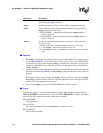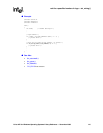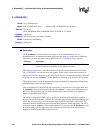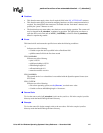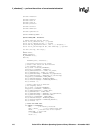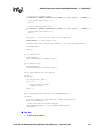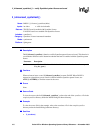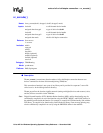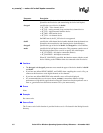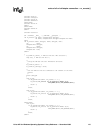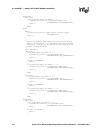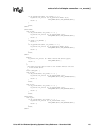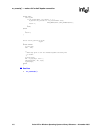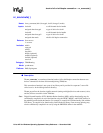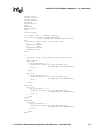
452 Voice API for Windows Operating Systems Library Reference — November 2003
nr_scroute( ) — make a full or half-duplex connection
!
!!
! Cautions
• The devtype1 and devtype2 parameters must match the types of the device handles in devh1
and devh2.
• If you have not defined DTISC, MSISCI, and FAXSC when compiling the sctools.c file, you
cannot use this function to route digital channels or fax channels.
• If you have not defined PRINTON in the makefile, errors will not be displayed.
• It is recommended that you do not use the nr_scroute( ) convenience function in high
performance or high density applications because this convenience function performs one or
more xx_getxmitslot invocations that consume CPU cycles unnecessarily.
!
!!
! Errors
None.
!
!!
! Example
See source code.
!
!!
! Source Code
The C source code for this function is provided in the sctools.c file located in the \dialogic\sctools
directory.
Parameter Description
devh1 specifies the valid channel device handle obtained when the channel was
opened for the first device (the transmitting device for half duplex)
devtype1 specifies the type of device for devh1:
• SC_VOX – voice channel device
• SC_LSI – analog network (loop start interface) channel device
• SC_DTI – digital network interface device
• SC_MSI – MSI station device
• SC_FAX – fax channel device
On DM3 boards, the SC_LSI value is not supported.
devh2 specifies the valid channel device handle obtained when the channel was
opened for the second device (the listening device for half duplex)
devtype2 specifies the type of device for devh1. See devtype1 for a list of defines.
mode specifies full or half-duplex connection. This parameter contains one of
the following defines from sctools.h to specify full or half duplex:
• SC_FULLDUP – full-duplex connection (default)
• SC_HALFDUP – half-duplex connection
When SC_HALFDUP is specified, the function returns with the second
device listening to the TDM bus time slot connected to the first device.



